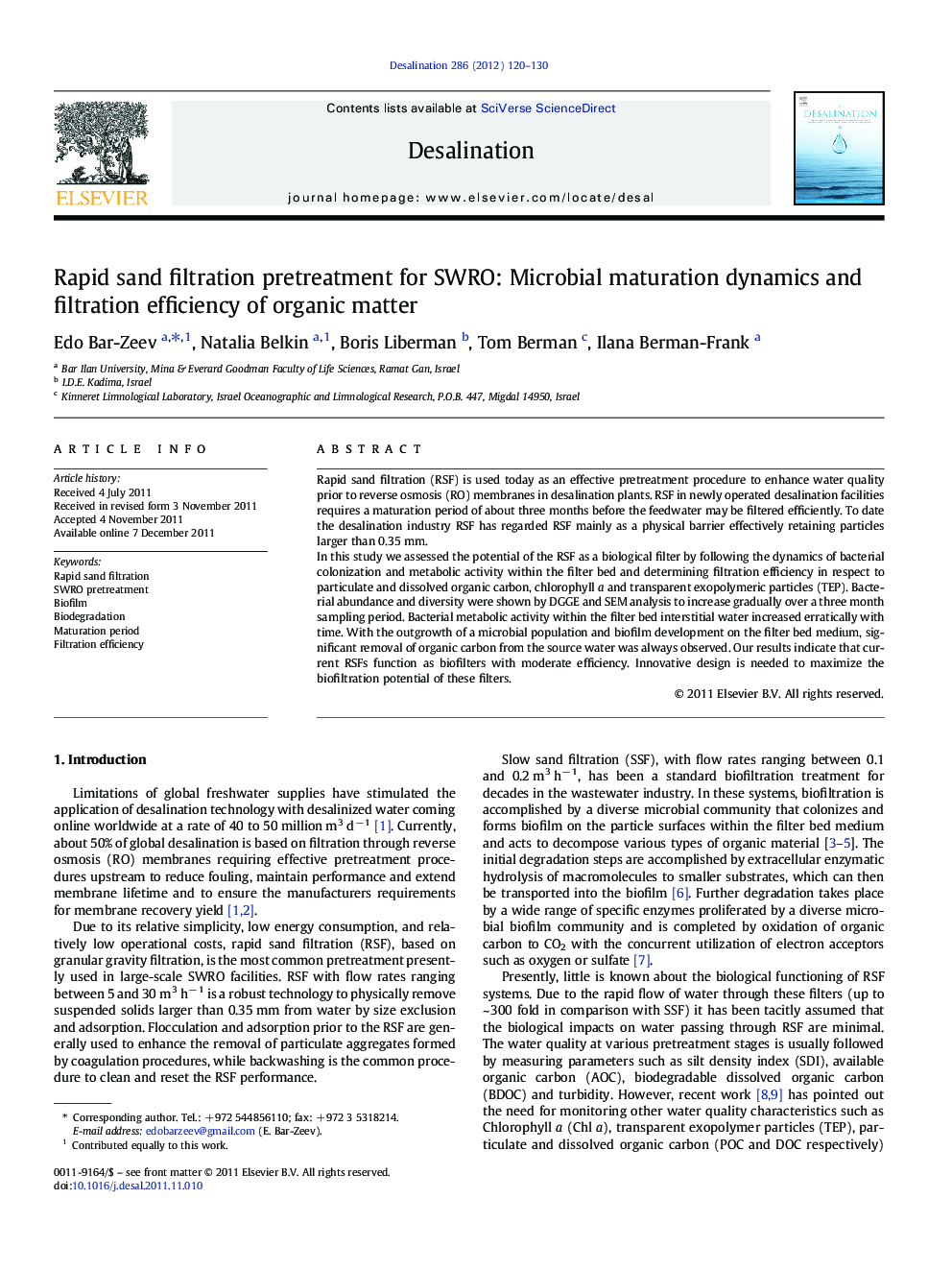| Article ID | Journal | Published Year | Pages | File Type |
|---|---|---|---|---|
| 624499 | Desalination | 2012 | 11 Pages |
Rapid sand filtration (RSF) is used today as an effective pretreatment procedure to enhance water quality prior to reverse osmosis (RO) membranes in desalination plants. RSF in newly operated desalination facilities requires a maturation period of about three months before the feedwater may be filtered efficiently. To date the desalination industry RSF has regarded RSF mainly as a physical barrier effectively retaining particles larger than 0.35 mm.In this study we assessed the potential of the RSF as a biological filter by following the dynamics of bacterial colonization and metabolic activity within the filter bed and determining filtration efficiency in respect to particulate and dissolved organic carbon, chlorophyll a and transparent exopolymeric particles (TEP). Bacterial abundance and diversity were shown by DGGE and SEM analysis to increase gradually over a three month sampling period. Bacterial metabolic activity within the filter bed interstitial water increased erratically with time. With the outgrowth of a microbial population and biofilm development on the filter bed medium, significant removal of organic carbon from the source water was always observed. Our results indicate that current RSFs function as biofilters with moderate efficiency. Innovative design is needed to maximize the biofiltration potential of these filters.
► We monitored the microbial maturation process and filtration efficiencies of a fully operational rapid sand filter (RSF). ► The microbial maturation process was complete after around two and half months. ► Filtration efficiency (TOC, TEP, Chl a) was coupled to the media/biofilm coverage. ► The RSF has the potential to function as a biofilter with modification and optimization.
